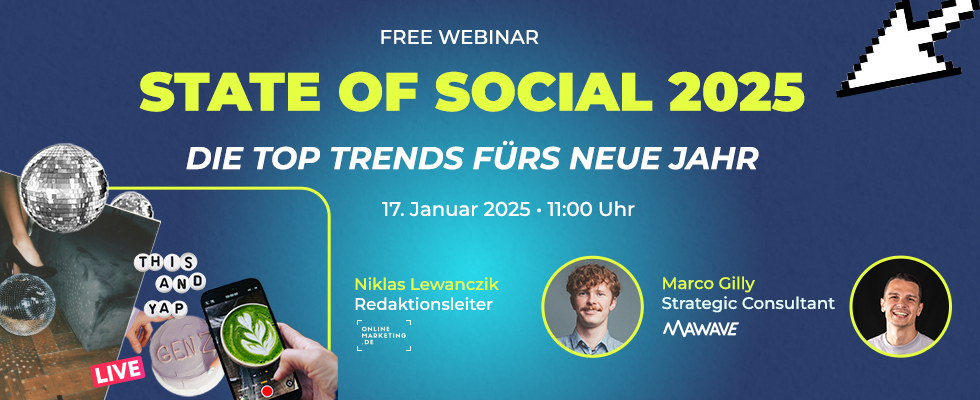An AppsFlyer analysis shows: AI apps are driving growth in the mobile market. While advertising spending and monetization strategies are shifting around the world, Germany is one of the leading growth markets.
2025 feels a bit like a digital wild west: algorithms duel for our attention while AI-powered apps conquer the charts at the speed of light. Those who keep their finger on the pulse not only surf the digital wave, but also constantly discover new, creative possibilities in the area of digital applications. Whether AI-supported campaigns that adapt to user behavior in real time or algorithms that distribute advertising budgets so efficiently that even experienced media buyers are amazed – innovation never sleeps. Those who don’t follow suit risk being digitally sidelined while others are already perfecting their next moves with algorithms and automation.
Amid this frenzy, marketing analytics firm AppsFlyer releases its annual Analysis of mobile app trends – and the numbers make you sit up and take notice. One trend in particular stands out: installations of Gen AI consumer apps for paid installs have tripled within a year. 200 percent growth, driven by an AI that has long since grown beyond simple creative applications.
From down to wow:
ChatGPT impresses with Apple integration
Germany ranks third in advertising spending growth in the non-gaming sector
In an international comparison, Germany ranks third in terms of growth in advertising spending in the non-gaming sector. These increased by 25 percent compared to the previous year. Finance, entertainment, travel, food & drink and shopping apps in particular contributed to this increase. This should be seen as positive because dynamic development indicates growth, innovation and increasing investments. Because a growing market means more opportunities for companies, new business models and higher demand for digital solutions.
While non-gaming apps thrived, the gaming sector saw a five percent decline in advertising spending, reflecting the overall performance of the gaming market in Europe. Ville MikkolaRegional Director DACH at AppsFlyer, explains:
The increasing investment in the non-gaming space is due to advanced monetization strategies as well as the implementation of owned media technologies to improve personalization. Despite the decline in the gaming segment, the German app economy continues to be resilient and adaptable.
Global trends: growth in the non-gaming sector
Global in-app purchases (IAP) in the non-gaming sector have increased by almost 20 percent, supported by sophisticated monetization strategies and inflation-related price adjustments. In contrast, IAP revenues in the gaming sector remained stable or experienced slight declines.
Global advertising spending on non-gaming apps increased by eight percent, while gaming categories saw a decrease of seven percent. Most notably, advertising investment in financial apps increased by 61 percent, while travel apps increased by 20 percent. Shopping apps, on the other hand, experienced a moderate decline of eight percent, which is interpreted as normalization after the 2023 boom.
The most important trends for 2024 at a glance
- Hybrid monetization on the rise: In-app advertising (IAA) revenue grew by 26 percent in the non-gaming sector and by seven percent in the gaming sector.
- Boom in Gen AI apps: Paid installs of generative AI apps increased by 200 percent worldwide.
- Sharp increase in leisure apps: Casino and gambling apps (+102 percent), sports betting (+93 percent) and lifestyle apps (+43 percent) grew significantly.
- Change in the advertising market: Major gaming networks invested 38 percent more in non-gaming apps, while investments within the gaming market fell by 19 percent.
- New dynamics in the gaming sector: Casual games grew by three percent, while midcore and casino games suffered double-digit declines.
- Expansion von Deep Linking: Strong increase in web-to-app (+77 percent), email-to-app (+45 percent) and text-to-app (+29 percent).
- Remarketing is overtaking paid installs: Remarketing conversions on paid channels grew by 22 percent, while user acquisition only increased by two percent.
- AI-driven creativity: The number of creatives produced increased by 40 percent, driven by high budgets from large apps.
The 2024 mobile app trends are based on anonymized analysis of data from over 35,000 apps worldwide (excluding China). The study includes 140 billion installs, 53 billion remarketing conversions, and a detailed examination of engagement metrics across iOS and Android platforms.
The results show: The mobile app market remains dynamic, characterized by innovative monetization strategies, the growing role of AI and changing investment patterns. Those who can adapt will continue to benefit from these developments in 2025.
State of Social 2025:
This is how you discover the biggest trends

Source: onlinemarketing.de


